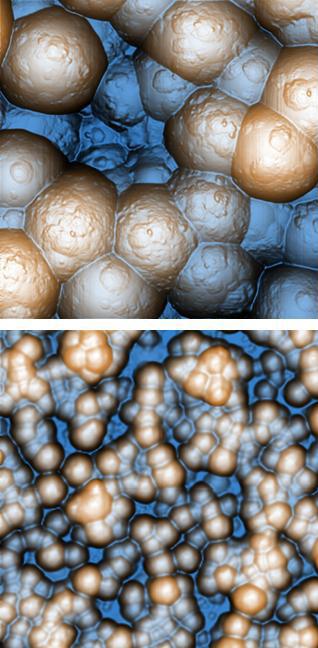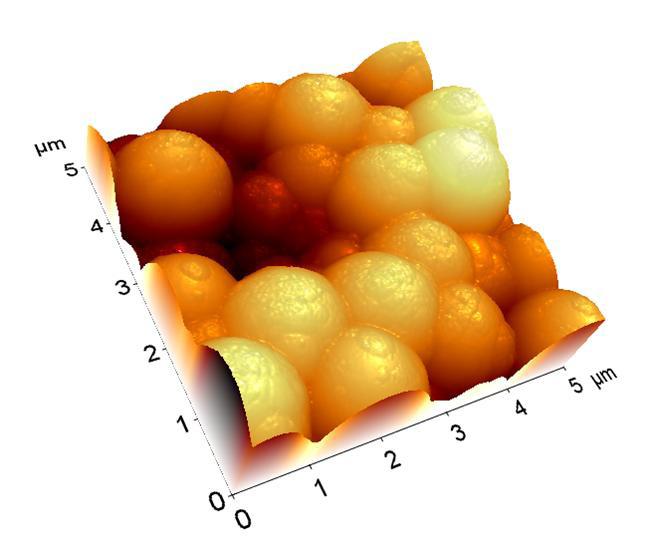Water-Soluble Polymers are Developed for Environmentally Friendly Polymer Coating Applications.
Enzymatic polymerization of self-assembling amphyphilic alkyl tyrosine derivatives from emulsions results in water-soluble polymers which are more easily processable than highly crosslinked polyphenols. Polymers of DELT yield thin films when spread on the surface of water. This surface activity may be exploited to eliminate organic solvents and other toxic reagents currently used in polymer coating applications. Such coatings provide both chemical protection and electrical insulation of gold-covered metallic conductors during subsequent processing. The aqueous based coatings are of interest as environmentally friendly and cost-effective replacements for epoxy-based coatings currently employed in microelectronics.

Figure 1. Non-contact AFM image of Green Chemical Polymer taken by the XE-100 (5 μm and 20 μm scan size). Image Courtesy of Dr. Jun Seok Lee and Prof. Changmo Sung, Univ. of Mass., Lowell.
Sub-nano scale polymer samples are investigated without damage to the surface using Non-Contact AFM, Figure 1. Irregular spherical aggregates below and above 1 μm in diameter were observed bound to the gold covered mica substrates. The small features on the bead surface are proof of the micellular structure of DELT, which could only be detected by the high performance of the XE-100 AFM. The three dimensional view given in Figure 2, can be much more helpful than regular electron microscopy in understanding height information of this unique round shaped sample. The coverage of the polymer surface was examined using different scan areas. Using AFM, we can investigate the nano texture on the surface of each bead more effectively than with SEM.
 Figure 2. Images of microstructures for DELT bead formation on the gold-coated mica by NC-AFM (5 μm scan size). NC-AFM image shows fine details on each small bead.
Figure 2. Images of microstructures for DELT bead formation on the gold-coated mica by NC-AFM (5 μm scan size). NC-AFM image shows fine details on each small bead.




